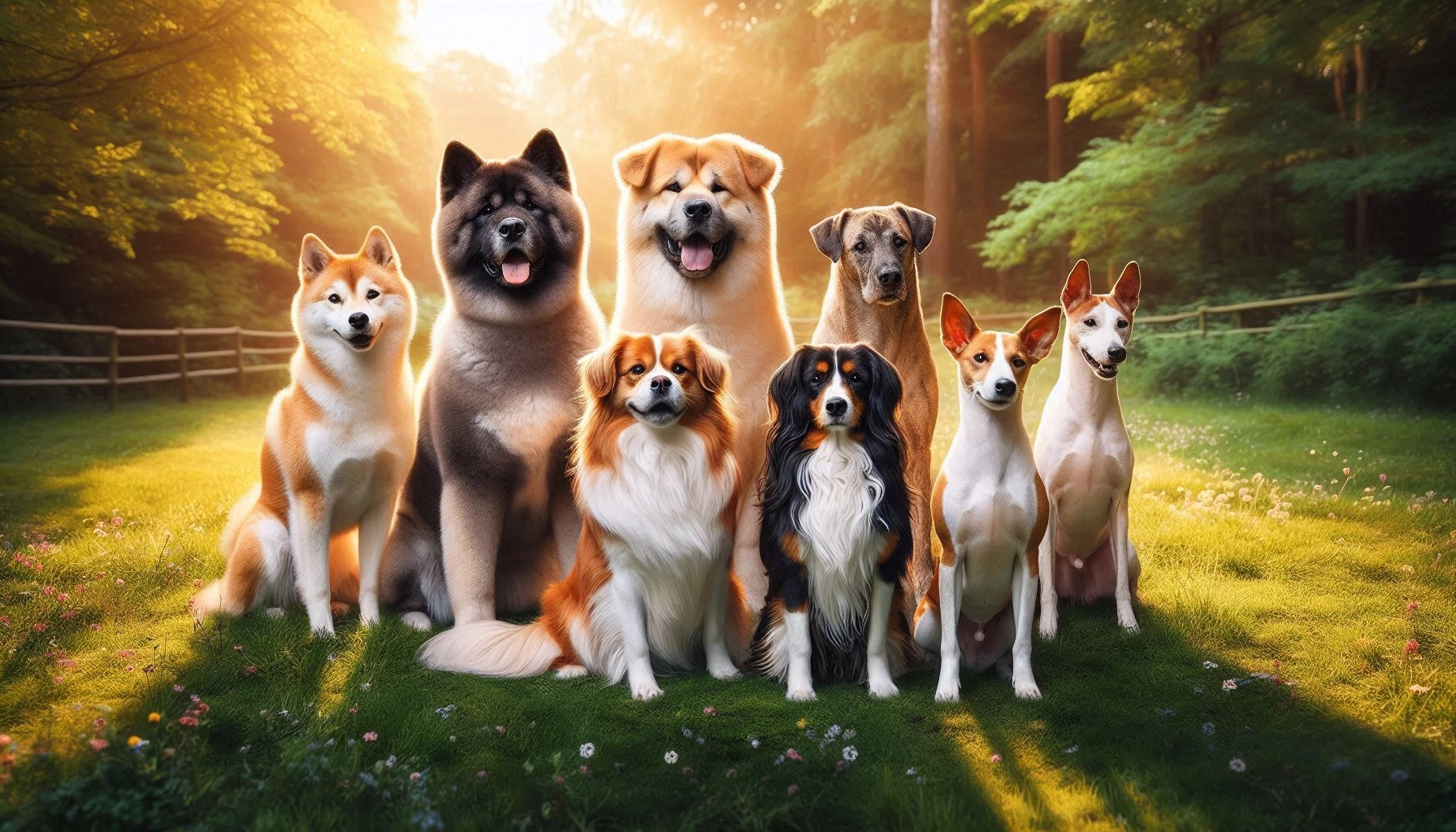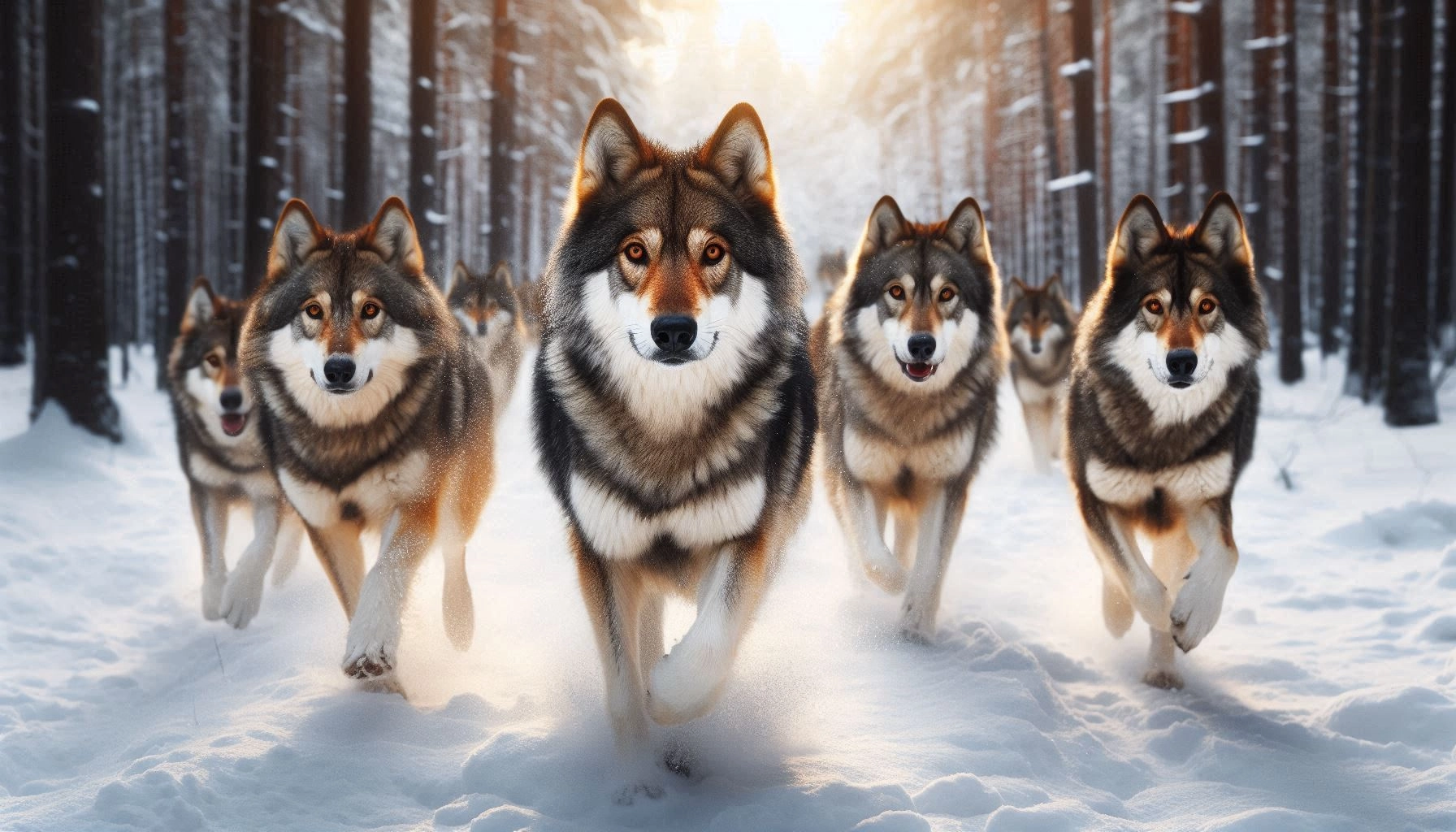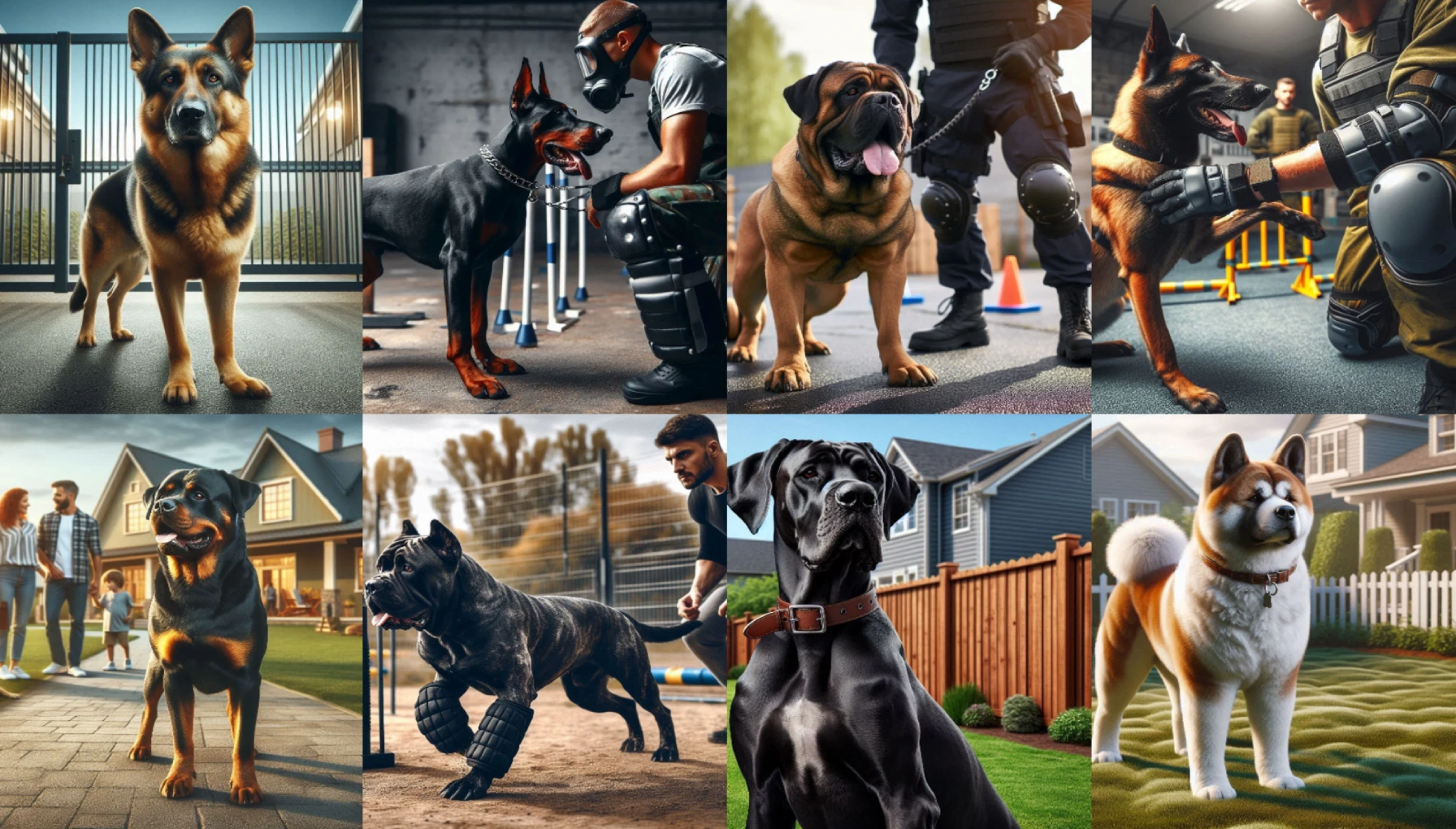Table of Contents
Top 5 Most Dangerous Dogs: What to Know Before Adopting
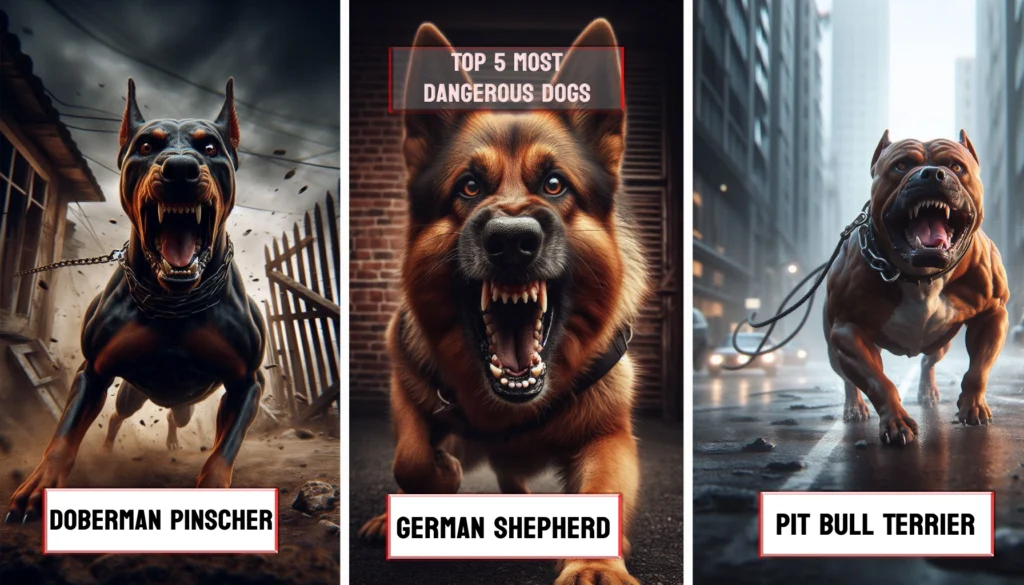
Adopting a dog is a decision that brings joy, companionship, and responsibility into your life. However, the choice of breed can have a significant impact on your experience as a dog owner. While no breed is inherently “dangerous,” some dogs have been labeled as such due to their strength, guarding instincts, and the need for experienced handling. Understanding the temperament and specific needs of these breeds is crucial before deciding to bring one into your home.
This article aims to shed light on five dog breeds that are often considered dangerous. It’s important to note that a dog’s behavior is shaped by various factors, including genetics, upbringing, environment, and, most importantly, the owner’s approach to training and socialization. This discussion is not intended to deter you from adopting these breeds but to inform you about the challenges and responsibilities associated with them. By being well-informed, you can make a responsible choice and ensure a happy, harmonious relationship with your new companion.
Why You Need or Don’t Need to Adopt a “Dangerous” Dog
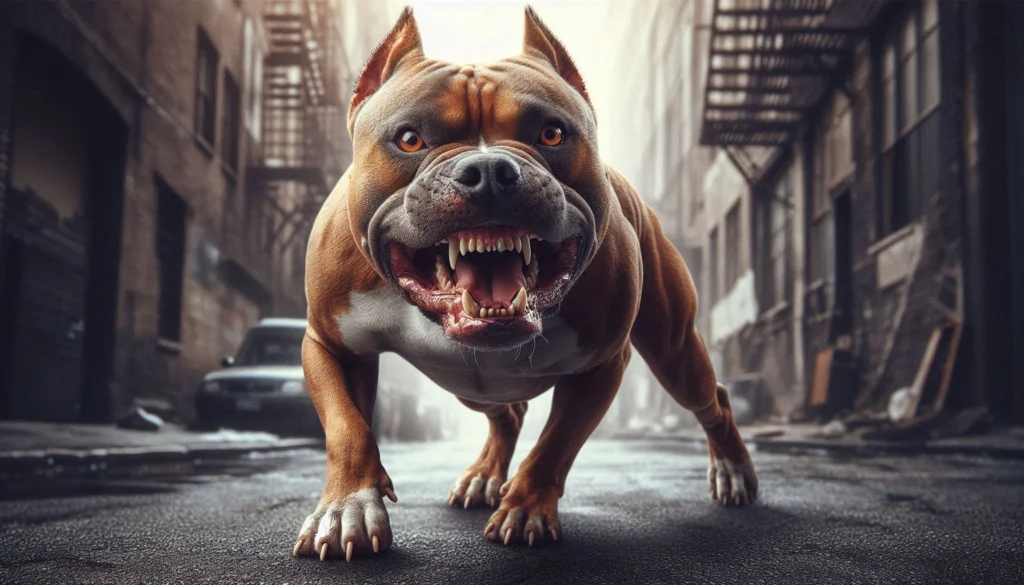
Adopting a dog is a long-term commitment that requires careful consideration of several factors. When it comes to breeds labeled as “dangerous,” the decision becomes even more critical. Here’s why you might or might not want to adopt one of these breeds:
Reasons to Consider Adopting
- Loyal Companionship: Many of these breeds are known for their deep loyalty and protective nature. When properly trained and socialized, they can be incredibly affectionate and devoted to their families.
- Guarding Capabilities: If you need a dog that can provide security, breeds like Rottweilers and German Shepherds excel in guarding and protecting their homes.
- High Intelligence: Breeds like the Doberman Pinscher and German Shepherd are highly intelligent, making them excellent candidates for advanced training and specialized tasks.
- Active Lifestyle: If you lead an active lifestyle, breeds like the Alaskan Malamute can be a great match, requiring plenty of exercise and outdoor activities.
Reasons to Reconsider Adoption
- Training Requirements: These breeds often require experienced owners who can provide consistent training and leadership. Without proper training, their natural instincts can lead to behavioral issues.
- Socialization Needs: Early and ongoing socialization is crucial. Without it, these dogs may become overly protective or aggressive, especially around strangers or other animals.
- Strength and Size: The physical power of these breeds can be overwhelming for some owners, particularly those who may not have the strength or experience to handle a strong dog.
- Legal Restrictions: Some areas have breed-specific legislation that restricts or bans the ownership of certain breeds. It’s important to check local laws before adopting.
Ultimately, the decision to adopt a dog from any of these breeds should be made with careful consideration of your ability to meet their needs, provide the necessary training, and ensure they are raised in a loving, responsible environment.
1. Pit Bull Terrier


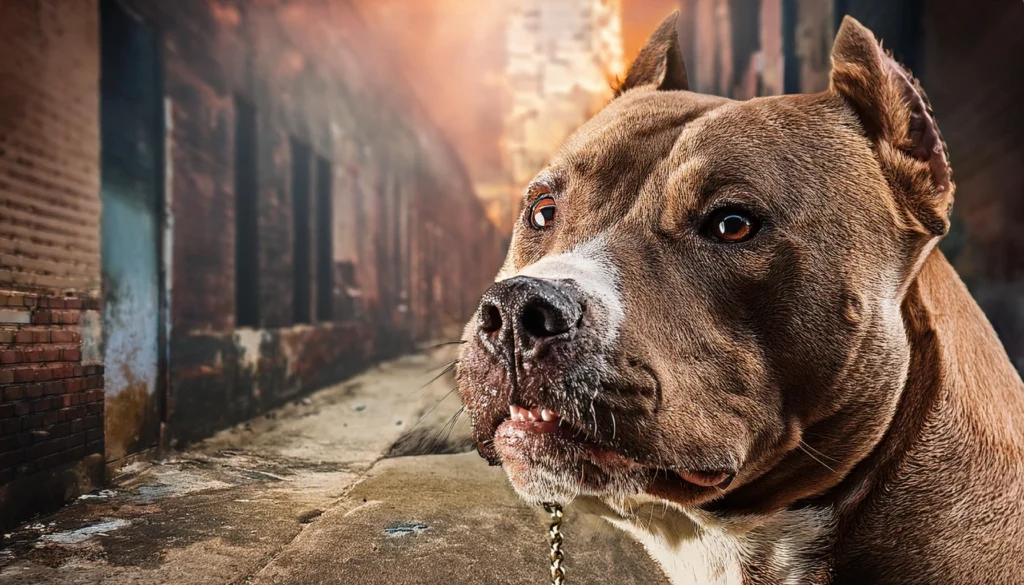

History and Reputation
The Pit Bull Terrier is perhaps the most misunderstood and controversial breed on this list. Originally bred in the 19th century for bull-baiting and later as farm dogs, Pit Bulls are known for their strength, tenacity, and determination. Unfortunately, these very traits have led to their use in illegal dogfighting, contributing significantly to their negative reputation.
Common Misconceptions
Pit Bulls have been the subject of much negative media coverage, often portrayed as inherently vicious. However, this reputation is largely undeserved. Studies and real-world experiences show that a well-raised Pit Bull can be just as loving and well-behaved as any other breed. The key lies in responsible ownership, proper training, and early socialization.
Temperament and Traits
Pit Bulls are known for their loyalty, strength, and protectiveness. These traits, while positive, can become problematic if not properly managed. Without adequate training and socialization, a Pit Bull may become aggressive in unfamiliar situations or when it feels threatened. It’s essential to provide a Pit Bull with a stable environment, consistent rules, and positive reinforcement to encourage good behavior.
Considerations Before Adopting
Before adopting a Pit Bull, consider whether you can commit to the time and effort required for proper training. Pit Bulls thrive in environments where they receive plenty of physical and mental stimulation, along with firm, but fair, leadership. An experienced owner who understands the breed’s needs is best suited to raise a Pit Bull into a balanced, loving companion.
2. Rottweiler


History and Background
The Rottweiler is a powerful working breed with a rich history. Originally used by the Romans to herd cattle and later as a guardian and draught dog in Germany, the Rottweiler has a strong work ethic and a natural instinct to protect its family.
Perception as a Dangerous Breed
Rottweilers are often perceived as dangerous due to their size, strength, and protective nature. Their instinct to guard can lead to aggressive behavior if not properly trained and socialized. However, these traits also make them excellent protectors and loyal companions when handled correctly.
Temperament and Behavioral Traits
Rottweilers are intelligent, confident, and assertive dogs. They require a firm, consistent owner who can establish clear boundaries and provide leadership. Early socialization is crucial to help a Rottweiler distinguish between friend and foe. Without it, their protective instincts can lead to aggressive behavior, especially around strangers.
Adoption Considerations
If you’re considering adopting a Rottweiler, it’s important to ensure you can provide the leadership and training they need. Rottweilers do best in homes where they have a clear role and receive plenty of physical and mental stimulation. An experienced owner who understands canine behavior is ideal for this breed.
3. German Shepherd
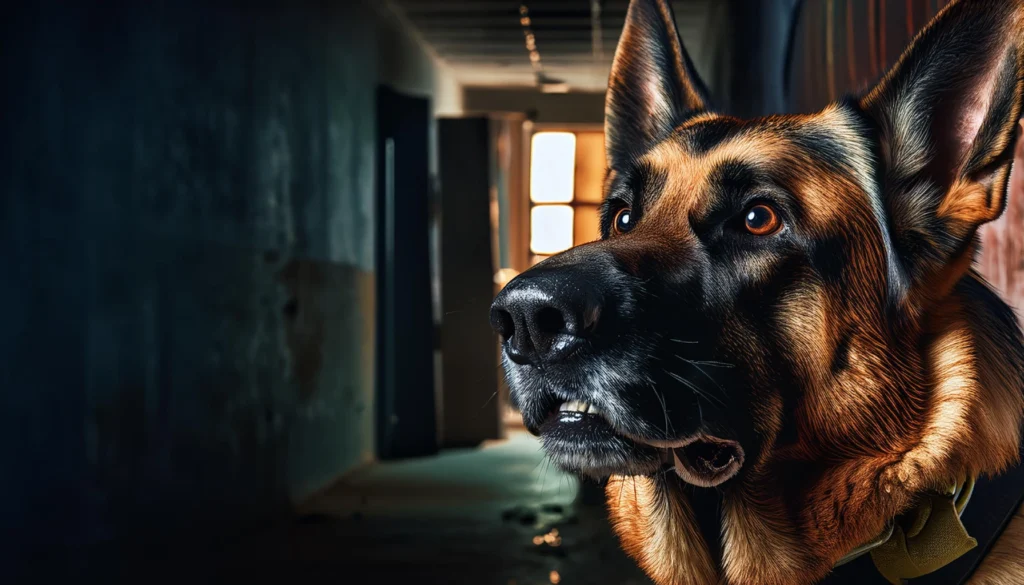
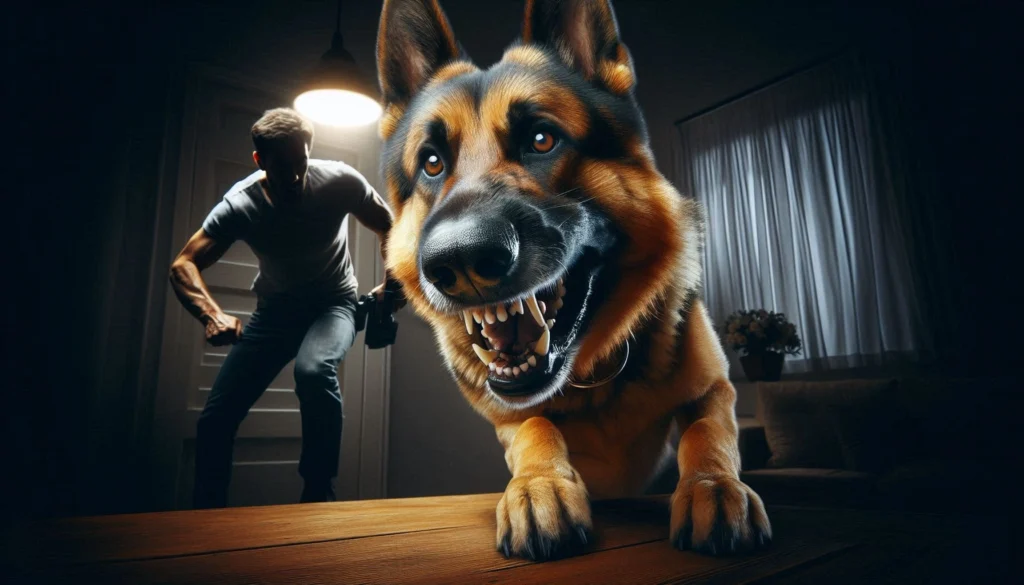
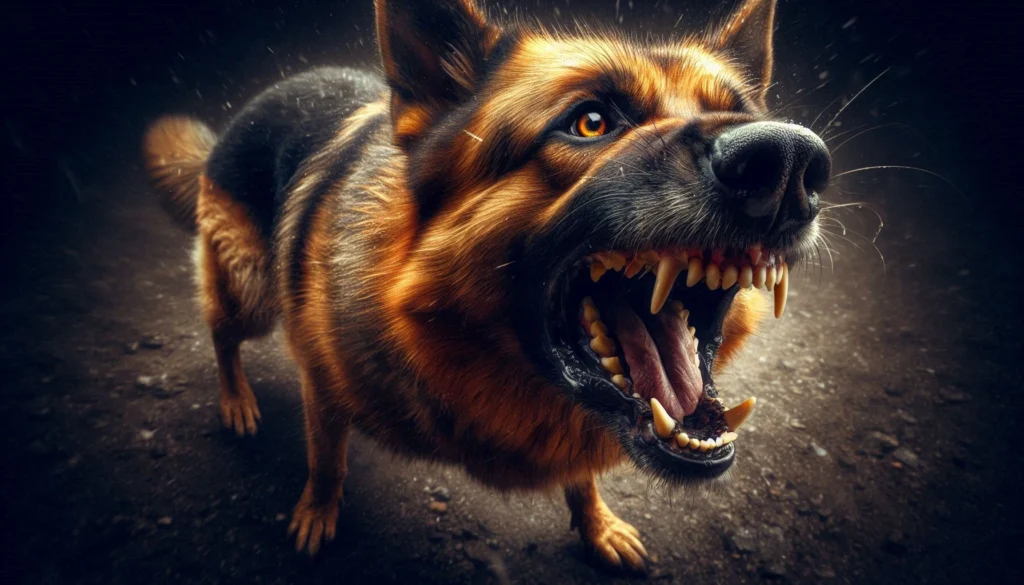
Breed Overview and Popularity
The German Shepherd is one of the most popular and versatile dog breeds in the world. Known for their intelligence, loyalty, and courage, German Shepherds are widely used in police, military, and search-and-rescue operations. However, their strong protective instincts and territorial nature can sometimes lead to aggressive behavior if not properly managed.
Natural Guarding Instincts
German Shepherds are natural guardians, with a strong desire to protect their families and territory. While this makes them excellent watchdogs, it also means they can be wary of strangers and defensive in unfamiliar situations. Proper training and socialization are essential to ensure these instincts do not lead to unwanted aggression.
Training and Socialization Needs
To ensure a German Shepherd grows into a well-adjusted family member, early socialization is key. Exposure to different environments, people, and other animals will help them develop confidence and reduce the likelihood of aggressive behavior. Obedience training is also crucial, as German Shepherds need to understand their place in the family hierarchy and respond reliably to commands.
Suitability for Active Homes
German Shepherds thrive in active homes where they receive plenty of exercise and mental stimulation. They are not suited for sedentary lifestyles or owners who cannot commit to regular training. If you’re considering adopting a German Shepherd, be prepared to invest time in their training and provide the physical activity they need to stay healthy and happy.
4. Doberman Pinscher
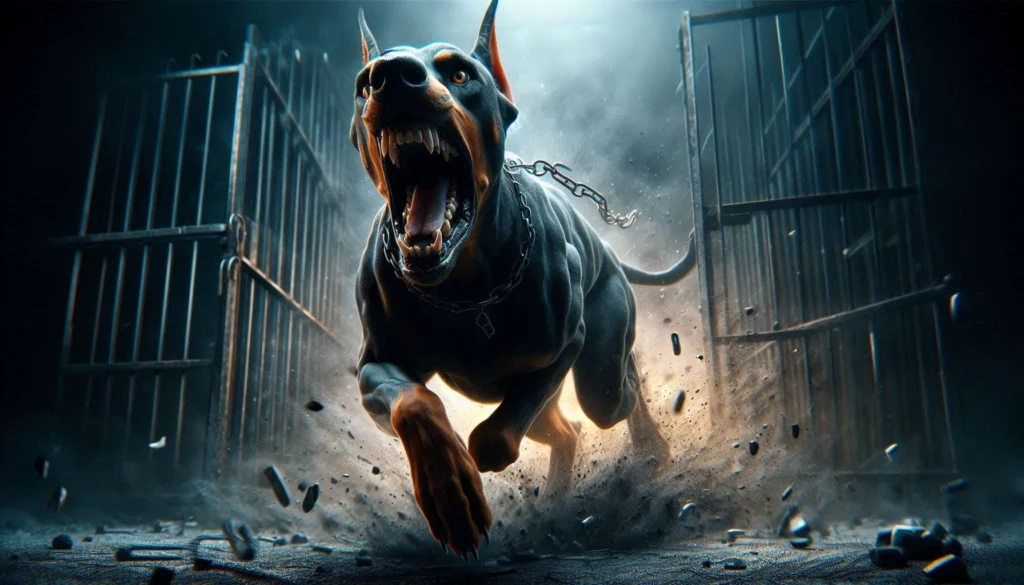


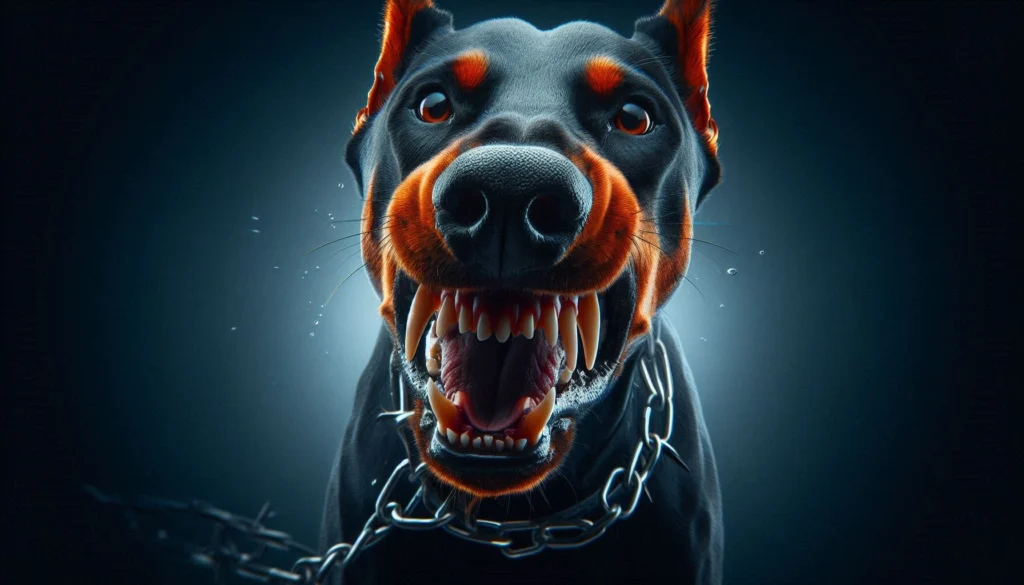
History and Development
The Doberman Pinscher was developed in the late 19th century by a German tax collector named Karl Friedrich Louis Dobermann, who needed a loyal and fearless dog to protect him on his rounds. The breed’s alertness, intelligence, and loyalty quickly made them popular as guard dogs and police dogs.
Perceived Danger and Loyalty
Dobermans are fiercely loyal to their families, which can sometimes manifest as aggression towards strangers. Their protective instincts, combined with their speed and strength, have contributed to their reputation as a dangerous breed. However, with proper training, Dobermans can be both effective protectors and loving family pets.
Behavioral Characteristics
Dobermans are intelligent, energetic, and responsive dogs that require firm, consistent training. They thrive on positive reinforcement and do best when they understand their role within the family. Without proper training and socialization, a Doberman’s natural protectiveness can turn into over-guarding or aggression.
Adopting a Doberman
Before adopting a Doberman, consider whether you have the experience and time to meet their needs. Dobermans require regular exercise, mental stimulation, and socialization to prevent behavioral issues. They do well in homes where they can participate in activities that challenge both their minds and bodies, such as obedience training, agility, or protection sports.
5. Alaskan Malamute

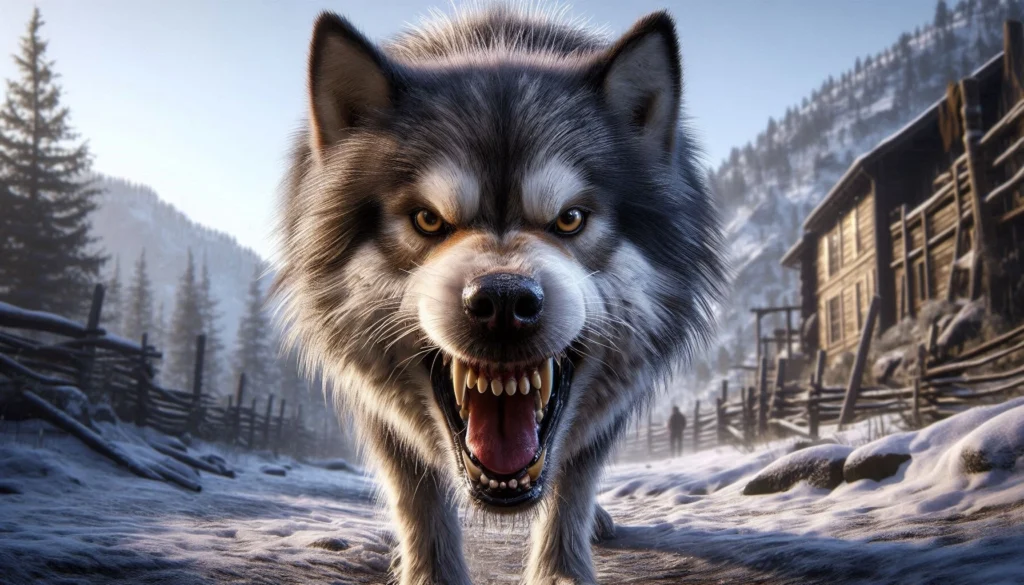
Origin and Purpose
The Alaskan Malamute is a powerful and independent breed, originally developed for pulling heavy sleds across long distances in harsh Arctic conditions. Their strength, endurance, and independent nature make them well-suited for this task, but these same traits can also make them challenging pets for inexperienced owners.
Challenges of Ownership
Alaskan Malamutes are known for their high prey drive, which can make them dangerous around smaller animals if not properly controlled. Their strong-willed nature and size can also make them difficult to train, especially for first-time dog owners. However, with proper leadership and training, Malamutes can become loyal and affectionate companions.
Temperament and Needs
Malamutes are independent thinkers, often making decisions on their own. This trait, while useful in a working environment, can lead to challenges in a home setting if the dog is not properly trained and socialized. Malamutes require confident, experienced owners who can provide the structure and guidance they need to thrive.
Considerations Before Adopting
If you’re thinking about adopting an Alaskan Malamute, be prepared for a dog that needs plenty of exercise, mental stimulation, and social interaction. Malamutes do best in homes with large, secure yards and owners who can dedicate time to training and exercising them. Their independent nature means they require an owner who can provide consistent, firm leadership without being overly harsh.
Factors That Contribute to Aggressive Behavior

While certain breeds may have a reputation for being dangerous, it’s important to recognize that aggressive behavior is not solely determined by breed. Several factors can contribute to a dog’s aggressive behavior, including:
1. Poor Training
Dogs that are not properly trained may develop behavioral problems, including aggression. Consistent, positive reinforcement training is essential for teaching dogs appropriate behavior and ensuring they understand their place within the family.
2. Lack of Socialization
Dogs that are not exposed to a variety of people, animals, and environments during their early development may become fearful or aggressive in unfamiliar situations. Early and ongoing socialization helps prevent these issues and builds a dog’s confidence.
3. Abuse and Neglect
Dogs that have been abused or neglected are more likely to develop aggressive behaviors as a result of fear, insecurity, or mistrust. These dogs require patience, rehabilitation, and a loving environment to overcome their past experiences.
4. Improper Environment
A dog’s living environment plays a significant role in its behavior. Dogs that are kept in isolation, lack mental and physical stimulation, or are subjected to stressful conditions are more likely to develop aggressive tendencies.
5. Health Issues
Sometimes, aggressive behavior can be linked to underlying health problems, such as pain, hormonal imbalances, or neurological issues. Regular veterinary check-ups are important to rule out any medical causes for behavioral changes.
Important Considerations Before Adopting
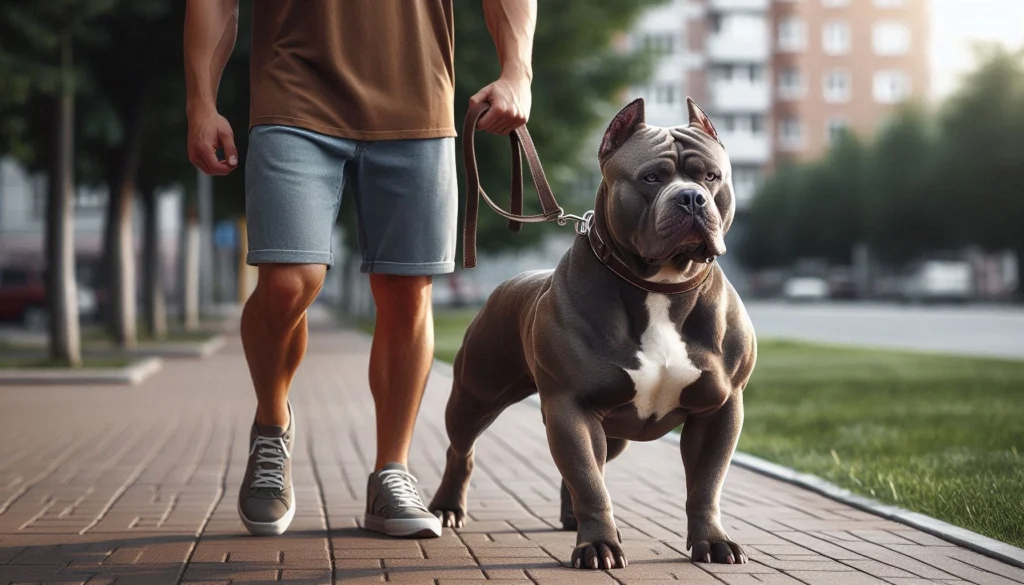
Before adopting a dog, especially from a breed that requires experienced handling, it’s crucial to consider the following:
1. Research the Breed
Understand the specific needs, temperament, and potential challenges associated with the breed you are interested in. Make sure you can meet these needs and are prepared for the level of commitment required.
2. Assess Your Lifestyle
Consider whether your lifestyle is compatible with the breed needs. Some breeds require more exercise, training, and attention than others. Make sure you can provide the time, space, and energy necessary to care for the dog properly.
3. Training Commitment
Be prepared to invest in professional training if needed, and commit to ongoing training and socialization. This is especially important for breeds that have strong protective instincts or a tendency towards aggression.
4. Legal Restrictions
Check local laws and regulations regarding breed-specific legislation. Some areas have restrictions on owning certain breeds, and it’s important to know these before adopting.
5. Family Considerations
Ensure that the breed you choose is compatible with your family members, including children and other pets. Some breeds may not be suitable for households with small children or other animals.
How to Control a Dog When It Gets Out of Control
Even with the best training and care, situations may arise where a dog behavior becomes unmanageable. Here are some tips on how to control a dog when it gets out of control:
1. Remain Calm
Dogs can sense their owner emotions, and reacting with panic or anger can escalate the situation. Stay calm and assertive, using a firm voice to give clear commands.
2. Use Commands
If your dog has been trained with basic commands like “sit,” “stay,” or “leave it,” use these to regain control. Consistency in training is key to ensuring your dog responds in stressful situations.
3. Create Distance
If your dog is reacting aggressively towards another dog or person, create distance between them to reduce tension. Use a leash or a barrier to separate them if necessary.
4. Redirect Attention
Try to redirect your dog attention to something else, such as a toy or a treat. This can help distract them from whatever is triggering their aggressive behavior.
5. Seek Professional Help
If your dog behavior continues to be a problem, seek help from a professional dog trainer or behaviorist. They can provide guidance on how to manage and correct the behavior.
6 Remove stimuli
Identify and remove the cause of the aggression, such as another animal or an unfamiliar person.
Conclusion
No dog is born dangerous. With the right training, socialization, and care, even breeds often labeled as “dangerous” can become loving, well-behaved companions. However, it’s crucial for potential adopters to do their research, understand the specific needs of the breed, and be prepared to take on the responsibility of training and socializing their dog.
If you’re considering adopting a dog from one of these breeds, make sure you’re fully informed and ready to meet the challenge. With the right approach, you can build a strong, positive relationship with your dog, ensuring a happy and fulfilling life together.
If you found this article helpful, please share it with others who might be considering adopting a dog. Feel free to leave a comment or question below we’d love to hear your thoughts and experiences with these breeds!
Frequently Asked Questions (FAQs)
Are Pit Bulls naturally aggressive?
Pit Bulls are not naturally aggressive toward humans, but they are strong and can be aggressive if not properly trained or socialized. Responsible ownership, early socialization, and training can ensure that a Pit Bull grows into a friendly, well-behaved companion.
Can a Rottweiler be a family dog?
Yes, Rottweilers can make excellent family dogs when they are well-trained and socialized. They are loyal, protective, and affectionate with their families, but they require experienced handling to manage their strong protective instincts.
